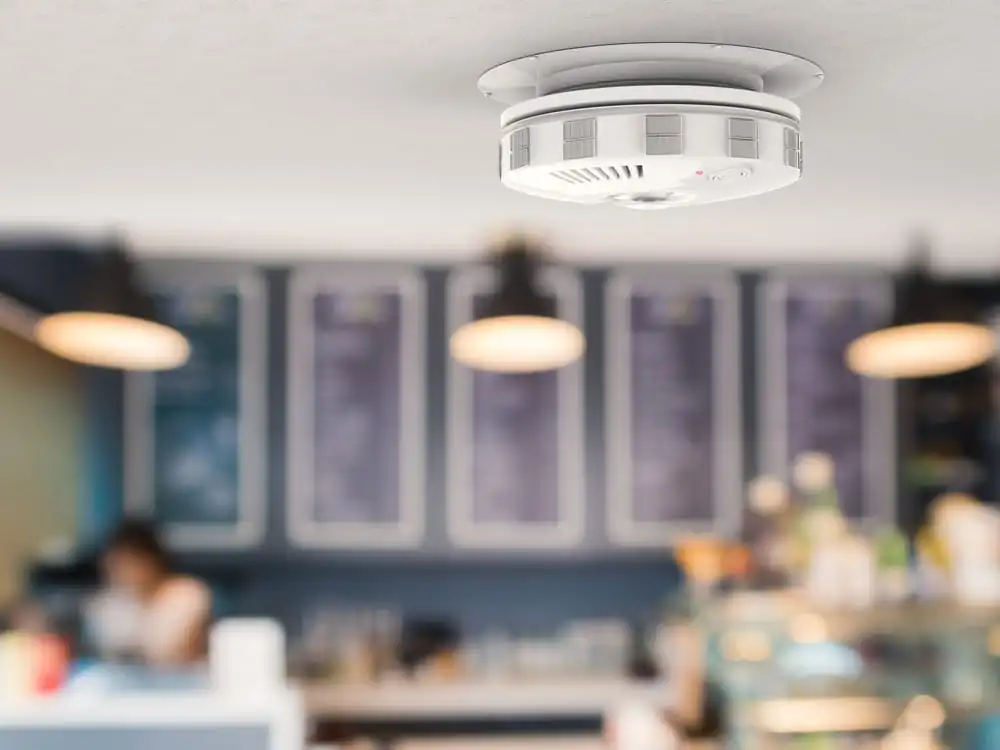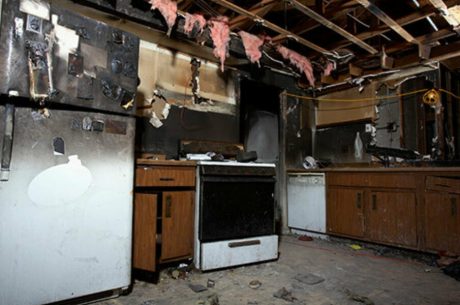Table of Contents
After a fire, the lingering impact goes beyond visible damage. Soot and smoke settle into every surface and saturate the air, creating health hazards and lasting property damage if not addressed promptly. This article explores how to restore your property, improve air quality, and protect your health through thorough soot and smoke removal practices.
While both soot and smoke result from fire, they differ in composition and impact. Soot consists of carbon particles that cling to surfaces, often leaving unsightly stains. Smoke, on the other hand, carries a mix of gases and particles that can deeply penetrate furniture, fabrics, and walls, making them tough to clean.
Health Risks of Soot and Smoke Exposure
Lingering soot and smoke residue pose serious health risks. Inhaled smoke particles can lead to respiratory problems, skin irritation, and even long-term health concerns like asthma or bronchitis. Prolonged exposure to soot particles can particularly impact children, elderly individuals, and those with preexisting health conditions, making prompt removal vital for a safe environment.
Types of Smoke Residue
Not all smoke residues are the same; different fires produce different types of residue:
- Dry Smoke Residue: Produced by high-temperature, fast-burning fires, this residue is typically easier to remove and doesn’t cling as stubbornly to surfaces.
- Wet Smoke Residue: Resulting from smoldering, low-heat fires, wet smoke leaves sticky, thick residue, making it more challenging to clean.
- Protein-Based Residue: Often from kitchen fires involving organic materials, this residue can be nearly invisible but leaves a strong, lingering odor that’s difficult to eliminate.
Each type requires a unique approach to ensure complete and safe removal.
Challenges of Removing Soot and Smoke Residue
Smoke particles are small enough to penetrate deep into porous surfaces, while soot particles cling to non-porous surfaces. This adherence means soot and smoke can embed into walls, ceilings, and floors, sometimes even behind walls, making cleanup complex. Without proper tools, attempting to clean up soot may only spread it further, leading to more extensive damage and worsening stains.
The Importance of Immediate Cleanup
Soot and smoke residue are acidic, which means they can erode and stain materials quickly if left untreated. Metals can rust, walls can stain, and furniture fabrics can absorb the smoke smell permanently. Early action helps contain the damage, making it easier to restore surfaces and preventing permanent deterioration.
DIY vs. Professional Soot and Smoke Removal
While some may consider DIY soot and smoke cleanup, the task is often more difficult and delicate than it appears. Pros of DIY Cleaning: cost savings and convenience if the damage is minimal. Cons: the risk of inadequate removal, spreading soot, and incomplete odor elimination. Professionals bring specialized equipment and cleaning agents to remove soot and smoke effectively, ensuring no residue or smell lingers.
Key Steps in the Smoke and Soot Removal Process
The cleanup process for smoke and soot involves several important steps:
- Initial Assessment and Removal Plan: Professionals inspect the extent of smoke and soot damage and create a customized cleanup plan.
- Ventilation: This step involves opening windows, doors, and using industrial fans to clear the space of smoke particles as much as possible.
- Air Purification: Air scrubbers and HEPA filters are often employed to eliminate any remaining particles in the air, ensuring it’s safe to breathe.
Air Purification Techniques
Air purification is a cornerstone of smoke remediation. Industrial-grade air scrubbers, HEPA filters, and air purifiers can remove smoke particles that would otherwise linger in the air. HEPA filters trap particles as small as 0.3 microns, providing clean, breathable air by filtering out harmful smoke residue.
Surface Cleaning Techniques for Soot Removal
Each type of surface requires a different method to safely remove soot without spreading it further:
- Walls: Chemical sponges or dry-cleaning sponges are highly effective in capturing soot on painted or textured walls without smearing it.
- Floors: Hard surfaces like tile or wood can be cleaned with special detergents, while carpets often require deep cleaning or even replacement if heavily stained.
Using the right products prevents additional stains and safeguards the integrity of each surface.
Odor Elimination Techniques
Even after soot and particles are removed, smoke odor can linger. Odor-eliminating agents, thermal foggers, and ozone treatments work together to neutralize the smell on a molecular level, ensuring it doesn’t return. A thorough approach is key to making sure the home is free of that lingering, burnt odor.

Dealing with Stubborn Soot Stains
Soot can leave behind dark, greasy stains that require targeted products and techniques. For stubborn marks, enzyme-based cleaners or specific soot removers can help break down particles without damaging the surface. Careful scrubbing with the right tools ensures these stains don’t become permanent blemishes.
Preventative Measures to Reduce Future Damage
Preventing future smoke and soot buildup is essential for a healthy indoor environment:
- Regular HVAC Maintenance: Keeping HVAC systems clean and fitted with high-quality filters minimizes the spread of smoke particles.
- Fireproofing Tips: Installing smoke detectors, maintaining fire extinguishers, and keeping flammable materials in safe storage areas can reduce fire risks.
How Puroclean Restoration Specialists Help in Soot and Smoke Removal
For Scottsdale, AZ residents, Puroclean Restoration Specialists offer comprehensive soot and smoke removal services tailored to each property’s needs. With advanced equipment and expert technicians, Puroclean ensures every surface and air quality issue is addressed, restoring your space to a clean, safe condition.
Conclusion
Removing soot and smoke after a fire isn’t just about aesthetics; it’s about ensuring a safe, livable space free from hazards. With professional help from Puroclean Restoration Specialists, you can restore your property, protect your health, and move forward with peace of mind. Quick, thorough action makes all the difference.
FAQs
Do air purifiers help in reducing smoke and soot particles?
Absolutely. HEPA filters in air purifiers effectively capture smoke particles and can help restore air quality.
What is the difference between soot and smoke damage?
Soot is a collection of fine carbon particles that cling to surfaces, while smoke includes a mix of gases and particles that can penetrate surfaces and leave strong odors.
How soon should soot and smoke cleanup begin after a fire?
Cleanup should start within 24 to 48 hours if possible, as soot and smoke can begin to cause permanent damage shortly after a fire.
Can smoke odors be completely removed?
Yes, with the right equipment and odor-neutralizing treatments, professionals can eliminate even deep-seated smoke odors.
What’s the most effective way to clean soot off walls?
Using a soot sponge or chemical sponge is effective for removing soot without smearing. Avoid water or regular cleaners as they can worsen stains.




 PuroClean Restoration Specialists
PuroClean Restoration Specialists